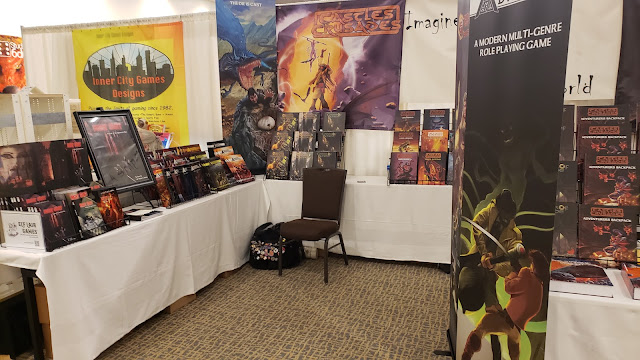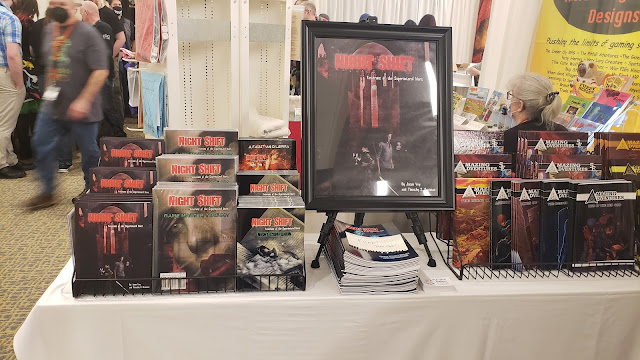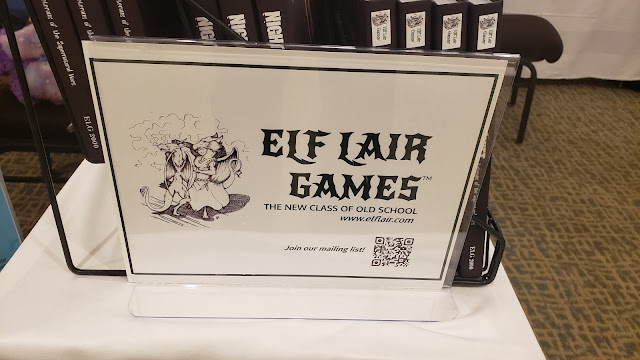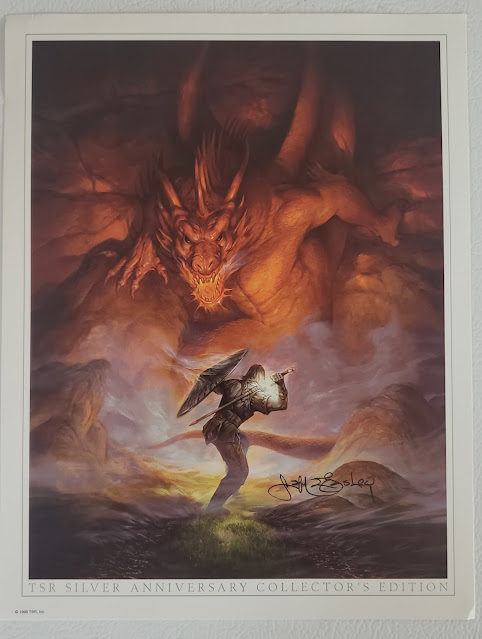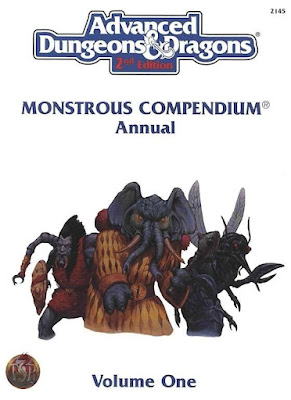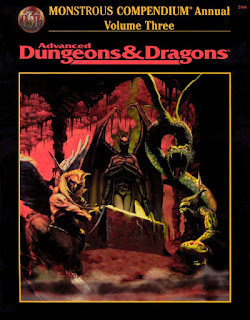
The world is not what it seems. There is a barrier which surrounds reality and gives it the order and natural laws that mankind, blind to the truth that only outsiders, cultists, and the oddballs recognise and follow, for beyond the barrier lies chaos… At first a reflection of our reality, but then a distorted version, and further and further away until there are no natural laws and nothing that can be recognised of our reality. The barrier is not immutable, for in places it is weak and there are things and beings on the other side which want to get through to our reality, and even worse, men and women who would help them, and even welcome them through. Some work alone, but others form cults, hiding behind other organisations and planning and plotting away in secret, hunting for and researching the knowledge that will bring their plans to fruition, whether that is for power, to discover their truth about the cosmos, or simply to destroy reality. There are others on the same path, who through personal trauma have come to realise the true nature of reality, but do not plot, plan, or research ways in which to pierce the barrier for their own ends, but to prevent monsters from succeeding or being let in… They are outsiders, weirdos, and oddballs, pulled into a maelstrom of terrible events which nobody will ever believe, but returning scarred and traumatised, knowing that they may need to do it again and again, because no one else will.
This is the setting for
Kuf—meaning oddball or eccentric—a modern-day roleplaying game of Gnostic horror published by
Wilhem’s Games. As written, it is set in modern-day Sweden, but can be easily set elsewhere and it uses the light mechanics of
Knave. The result is a collision of esoteric horror and the Old School Renaissance, the Player Characters simply drawn and decidedly fragile, both mentally and physically, in the face of the resources that the cults can bring to bear and the things that they might summon. It is played in three distinct phases—Exploration, Confrontation, and Recovery. In the Exploration Phase, the Player Characters investigate, conduct research and interviews, monitor suspects, purchase and ready equipment, and ultimately, prepare for the Confrontation Phase. The Confrontation Phase is when the Player Characters sneak into the cult headquarters or summoning site, pierce the barrier and confront the things on the other side, and hopefully disrupt the ritual or plans of the cultists. The Recovery Phase is more formal and takes a month, but can take place between investigations or sessions. This is when the Player Characters plan the next investigation, seek medical care, study an artefact or read an esoteric tome, buy illegal equipment, recruit companions to the cause, and so on. Mechanically, all of these activities are rolled for, so might work, or even might be cut short because the next Exploration Phases begins—perhaps because the cultists they stopped in the previous Confrontation Phase have come looking for them!
A Player Character in
Kuf looks like a Player Character in
Dungeons & Dragons. He has the six requisite Attributes—Strength, Dexterity, Constitution, Intelligence, Wisdom, and Charisma. Five of these cover aspects as you would expect. Thus, Strength is used for melee attacks and physical Saving Throws; Dexterity covers agility and speed; Constitution to resist poison and sickness; Intelligence for handling concentration, recall, using magic and more; and Charisma for interacting with NPCs and recruiting companions. The difference is that Wisdom, in addition to covering the usual perception and intuition, actually handles ranged attacks! It is a radical change, but it means that Wisdom can be used as a more active attribute and that ranged attacks are associated with perception, and also it shifts some of the traditional emphasis in other retroclones away from Dexterity.
Each Attribute has both a bonus and a defence. The bonus is equal to the lowest value rolled during character creation. This is done using three six-sided dice, in order, as is traditional. Thus if a player rolled three, four, and five, to get a total of twelve, the bonus would be three. The Defence for an Attribute is the bonus value, plus ten. A Player Character also has a Level, which begins at zero, and represents the degree to which he has been affected by exposure to the true nature of the universe. As gains Levels, he will be changed by the universe, and gain odd powers or gifts, such as halo of light forming around his head which he must constantly concentrate on has to continuously concentrate to suppress, becoming semi-fireproof, or gaining true sight and so be able to see through the disguises of the creatures and things that have managed to cross through the barrier. Both Hit Points and Mind Points—the latter the equivalent of Sanity found in other roleplaying games—are derived from combinations of the attribute bonuses. A Player Character begins play with no armour and thus the base Armour Defence value, though he may be able to purchase armour during play and thus improve it. He will also have a Background or occupation, and a trauma or event which exposed him to the maelstrom. This trauma also grants him starting Experience Points.
To create a character in
Kuf, a player rolls three six-sided dice for the six Attributes, noting their Bonus and Defence values, and then rolls for Background and Trauma, plus the starting Experience Points from the Trauma. He can also roll or pick any extra languages the character knows and either pick or roll for a name.
Emma HanssonBackground: FarmerTrauma: Insanity (Batrachophobia)Languages: Swedish, Hebrew, French, Arabic, Spanish, German
Level 0Experience Points: 139
Hit Points: 8Mind Points: 09
Armour: None Bonus +1/Defence 11
Strength 16 Bonus +5/Defence 15
Dexterity 07 Bonus +1/Defence 11
Constitution 08 Bonus +2/Defence 12
Intelligence 15 Bonus +5/Defence 15
Wisdom 14 Bonus +2/Defence 12
Charisma 11 Bonus +3/Defence 12
Mechanically,
Kuf uses a throw of a twenty-sided die against a standard difficulty. If the player rolls sixteen or more, his character succeeds at the action. When it comes to opposed Saving Throws, this can be rolled by the player or the Game Master. For example, if a Player Character attempts to grapple a thief who just robbed him, his player could roll and add his character’s Strength Bonus against the thief’s Dexterity Defence, or the Game Master could roll against the Player Character’s Dexterity Defence adding the thief’s Dexterity Bonus. The option here is whether or not the Game Master and her players want to play
Kuf with player-facing rolls or use the standard method in which both players and the Game Master roll as necessary.
The option is also included to use Advantage and Disadvantage, as per
Dungeons & Dragons, Fifth Edition. Typically, this will come from the situation or the environment, but it could also come from any one of the several Traits rolled or chosen during character creation. The mix of these underlie who or what a character is and so bringing them into play encourages roleplaying.
Combat in
Kuf is kept simple. The Player Characters and their opponents both have a fifty percent chance of winning the Initiative, and attack rolls, whether using the Strength Bonus for melee attacks or the Wisdom Bonus for ranged attacks, have to be greater than the Defence value of the armour worn. Alternatively, if using player-facing rolls, the defending player would roll his character’s Armour Bonus to beat the attacker’s Defence value. In addition, Opposed Saving Throws can be used to do Stunts, such as stunning an opponent, knocking them over, disarming them, smashing armour, and so on. Stunts do not do damage though, although they can be combined with an attack attempt if the attacker has Advantage. This is instead rolling the two twenty-sided dice which is normal for Advantage.
Successful attacks do not just inflict damage per the weapon’s die size, but also by the type of attack. Blunt force trauma inflicts light wounds; shots, stabs, and cuts inflict serious wounds; destructive damage inflicts critical wounds; and beyond that, there are permanent wounds. On the character sheet, there are boxes for tracking Hit Points and wounds, each type of wound being marked with a different symbol. One type of wound can upgrade a lesser type, and once all of the boxes have been filled in on a Player Character’s wound track, his player starts again at the beginning, but fills them the boxes in with the worse wound type. For example, if a Player Character has all of his wound boxes filled with light wounds by being beaten up by thugs armed with baseball bats, and the beating continues, his player would start filling up the wound track with serious wounds. In combat critical hits either add another die’s worth of damage or upgrade the wound type.
Kuf then does the same for the Mind and Mind Points with sources of stress, which can be seeing beyond the barrier for the first time, encountering a frightening monster, suffering from a phobia, being the victim of crime, and so on. Like physical wounds, the effects of stress can be light, serious, critical, or permanent, and greater effects can overwrite the lesser effects. However, when a greater stress type overwrites a lesser type, a Player Character can suffer a Stress Reaction. This might be that he freezes on the spot, fleeing, or even attacking the source of stress. Critical trauma suffered through stress can also inflict nightmares, phobias, and worse.
In both cases of physical and mental damage, permanent wounds reduce a Player Character’s attribute bonuses each time permanent wounds are suffered. Player Characters in
Kuf are meant to be fragile, but this gives them a greater degree of resilience than is found in
Knave. However, there is a brutal nature to that resilience as more wounds are suffered and the damage gets worse and worse—and
Kuf applies this to both mental and physical damage.
For the Referee there is advice on running the game and its three phases—the Exploration Phase, Confrontation Phase, and Recovery Phase—as well discussions on the nature of the barrier and what lies beyond it, ritual magic, cults and cultists, artefacts and books, and creatures from nightmare, and in general the advice is good. However, there are problems with it, one lesser, three greater. The lesser problem is that the section for the Referee is not as well presented and in a lot of the table results for various tasks, like seeking medical care or purchasing illegal equipment, there are sections missing. The first of the greater problems is that the
Kuf does not give the Referee enough threats or rituals or books or artefacts for her to really get started or take inspiration from. There really is only one of each and it is just not enough.
The second greater problem is that there is no ready-to-play scenario. Now the Referee can take the somewhat frugal examples and inspiration from them to develop a scenario, and similarly, take inspiration from the lengthy example of play that takes up the last quarter of the book. This is quite entertaining and shows the reader how the designer intends
Kuf to be played.
The third greater problem is the broad nature of the game’s background. Gnosticism is the belief that human beings contain a piece of the highest good or a divine spark within themselves, and that both these bodies and the material world, having been created by an inferior being, are evil. Since it is trapped in the material world and ignorant of its status, this divine spark needs knowledge—‘gnosis’—in order to understand their true nature. This knowledge must come from outside the material world, which in
Kuf is the other side of the barrier. At the same in
Kuf, the Player Characters are protecting others from what lies on the other side of the barrier, and yet despite underpinning the roleplaying game, this deeper background is never really explored in
Kuf. Perhaps the inclusion of a scenario or better yet, more threats, cults, creatures from beyond, and so on would have given scope for the designer to present this background in an accessible fashion.
Physically,
Kuf is plain and simple, without any illustrations. It needs an edit, especially in the latter two thirds of the book.
Kuf works as a brutally nasty horror game—at least in mechanical terms, but does not quite work as a fully rounded, playable roleplaying game. If the Referee is looking for a modern day, grim and gritty horror roleplaying game using Old School Renaissance-style mechanics, then
Kuf has the basics of everything she needs. If the Referee is looking for a modern day, grim and gritty horror roleplaying game with an interesting setting, then
Kuf is not quite it. With some development (or even a second edition)
Kuf could be the Gnostic horror game which the author envisioned, for its pages contain suggestions of it, tantalising the reader and the Referee like hints behind some kind of barrier, waiting the revelation which will reach out and touch that divine spark…
 The A to Z of Conspiracy Theories: A is for Ancient Aliens
The A to Z of Conspiracy Theories: A is for Ancient Aliens 





